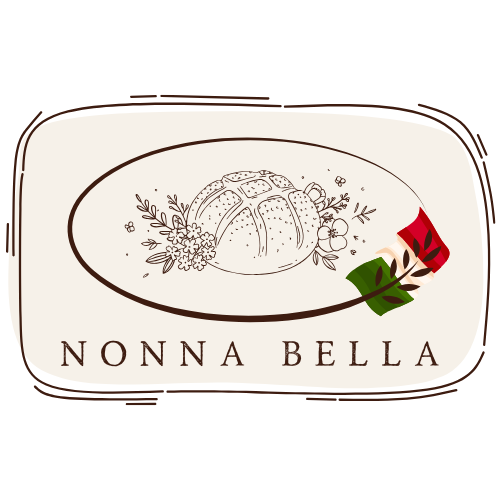
Comparing Sourdough vs Regular Bread: Which is Better for You?
The atmosphere is vibrant in the kitchen, the aroma of bread baking fills the air, and a sense of anticipation builds as a loaf of freshly baked sourdough emerges from the oven. But is sourdough bread truly a better option than regular bread, and why should you care? Let's dive into the delicious world of sourdough and regular bread to find out which one is better for you.
The Origins of Bread: A Tale of Two Loaves
Bread has been a staple in human diets for thousands of years, evolving from simple flatbreads to the wide array of varieties we enjoy today. Regular bread, known for its softness and uniform flavor, is typically leavened using commercial yeast. In contrast, sourdough bread is crafted using a sourdough starter—a mixture that harnesses the natural power of wild yeast fermentation and lactic acid bacteria.
Understanding the distinction between sourdough bread and regular bread helps in appreciating the benefits each offers to the discerning palate and digestive system.
The Sourdough Starter: The Heart of Homemade Sourdough
Creating a sourdough starter is akin to nurturing a living organism. Combining flour and water allows naturally occurring yeast and bacteria to flourish, which is the magic behind the sourdough's rise and unique flavor. Maintaining a sourdough starter requires a regular feeding schedule. Knowing how to feed sourdough starter is crucial to its development. Not only does sourdough starter troubleshooting come in handy for maintaining its health, but also in achieving the perfect loaf time after time.
Find a sourdough starter kit here.
The Art of Sourdough Baking
When diving into sourdough baking, understanding the intricacies of sourdough fermentation provides insight into why many artisans swear by it. Fermentation not only influences the bread's density and flavor but also plays a crucial role in its digestibility. Sourdough for diabetics, for example, might be a preferable choice due to the altered structure of carbohydrates during fermentation, which slows sugar absorption.
Benefits of Sourdough Fermentation
- Improved Nutrient Absorption: The lactic acid bacteria present in sourdough fermentation help break down phytic acid in flour, enhancing mineral absorption.
- Easier Digestion: The fermentation process partially pre-digests the flour, making it easier on the stomach.
- Lower Glycemic Index: Sourdough's natural bacteria reduce the rate at which glucose is released into the bloodstream.
Sourdough vs Regular Bread: Nutritional Showdown
When comparing sourdough vs regular bread, it quickly becomes clear that they serve different purposes based on nutritional needs and taste preferences. Regular bread, often enriched and containing added sugars, is generally quicker to produce but offers less complexity in flavor.
Taste and Texture
- Sourdough Bread: Sourdough's characteristic tang and a denser, chewier texture appeal to those who enjoy complex flavors.
- Regular Bread: Its neutral taste and lighter texture make it a favorite for those seeking simplicity or those who prefer to add toppings or spreads.
Health Considerations
Sourdough has numerous health benefits; however, individuals with gluten sensitivities should note that while sourdough fermentation can reduce gluten content, it does not eliminate it completely. This might make easy sourdough bread more palatable for some but should be approached with caution if you have gluten-related disorders.
The Journey of Baking: From Sourdough Starter to Loaf
Crafting sourdough bread from scratch is an exercise in patience and precision. Here are some sourdough baking tips to guide culinary voyagers:
- Mixing and Kneading: Utilize a good kneading mat for optimal results. A Silicone Baking Mat ensures mess-free and efficient kneading.
- Fermentation and Proofing: A long fermentation allows flavors to develop. Crafting Italian sourdough bread often involves considerate handling during this stage.
- Shaping and Scoring: Proper shaping leads to a structured crumb, while the best sourdough scoring techniques allow for controlled expansion of the loaf.
- Baking and Crisping: How to get a crispy sourdough crust? Consider baking in a dutch oven, such as a Le Creuset Dutch Oven, which traps steam, giving your bread the perfect crust.
Storing and Maintaining Your Sourdough
Knowing how to store sourdough starter is pivotal to maintaining its vitality. Feeding and maintenance are part of "My sourdough life," requiring consistent attention to keep it thriving. Be aware of sourdough starter vs yeast shelf life—it’s essential to maintain your starter even if baking intervals extend.
Delicious Sourdough Experiments
Sourdough’s versatility extends beyond loaves. Sourdough discard recipes open a world of culinary exploration—incorporating sourdough pizza dough and sourdough bagels into your repertoire can elevate regular meals into gourmet experiences. Pair your sourdough delights with suitable bakeware, like an 8/12/13 Inch Bamboo Pizza Board for perfect presentation.
Final Thoughts: Which Bread Reigns Supreme?
Sourdough bread, celebrated for its artistry and health benefits, provides an engaging baking experience along with a depth of flavor seldom found in regular breads. While not necessarily better in all aspects, it offers unique benefits that make it a favorable option for many, particularly when taking into account the nutritional advantages of sourdough fermentation.
Feeling inspired to explore the vibrant world of sourdough? Embrace the fulfilling journey from start to finish, and check out more here. Whether you're a seasoned baker or just starting, the rewards of sourdough crafting await.
